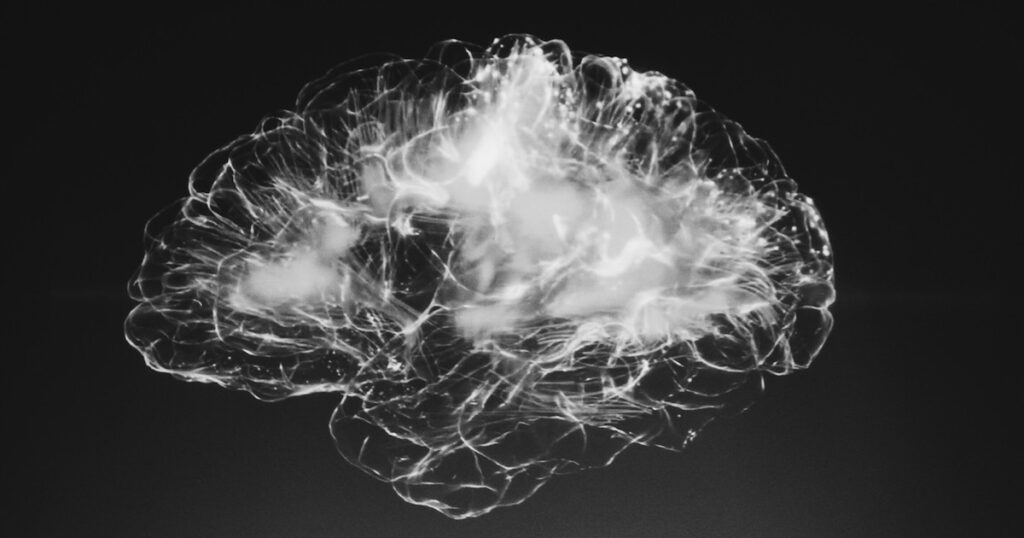
How Long Does it Take to Become a Child Therapist?
Some child therapists can find themselves spending between six and [...]

From Spellbound to Good Will Hunting, movies have frequently featured the theme of psychiatrists and their powerful impact on patients. And no wonder—as experts in human behavior and emotion, movie psychiatrists can help unlock the secrets that drive a troubled character. Real-world psychiatrists do pretty much the same thing, albeit usually not so quickly or dramatically.
As specialized medical doctors, psychiatrists play an essential role in the lives of individuals with mental health issues—a role that goes far beyond the old “distraught patient reclining on a leather couch” trope so prevalent in New Yorker cartoons. There’s more to being a psychiatrist these days than scratching your beard and asking: “So, how did that make you feel?”
If you’ve ever thought about becoming a psychiatrist, there’s good news. The field is experiencing rapid growth. In fact, the United States Bureau of Labor Statistics (BLS) reports that job opportunities in psychiatry will likely grow by 13 percent from 2020 to 2030.
Part of that growth is related to the diversity of services psychiatrists deliver. Psychiatrists primarily focus on the diagnosis and treatment of mental, emotional, and behavioral disorders, but their role goes far beyond that of a psychologist (who performs many of these same tasks). As medical doctors, psychiatrists can order a full range of tests, both psychological and laboratory. This function allows psychiatrists to develop a more holistic picture of a patient’s mental state, enabling them to make an accurate diagnosis and develop an impactful treatment plan. They can also prescribe medication, something psychologists, who focus on mental health counseling, can’t do (though there are some limited exceptions in a handful of states).
In this article, we will cover:
Psychiatrists can make a significant difference in the lives of individuals with mental health issues, treating everything from panic attacks to clinical depression to substance abuse. It’s satisfying work for those who enjoy helping others, and it can also be highly remunerative and prestigious. However, as with any job, there are pros and cons to keep in mind.
| University and Program Name | Learn More |
|
Merrimack College:
Master of Science in Clinical Mental Health Counseling
|
The job outlook for psychiatrists is healthy. It helps that psychiatrists can work in a variety of settings, including:
According to 2020 numbers from the BLS, nearly 30 percent of psychiatrists work in hospitals, including state, local, and private hospitals, and substance abuse and psychiatric hospitals. These mental health professionals diagnose and treat patients and supervise teams of non-clinicians. According to the BLS, the mean annual wage for psychiatrists is $207,600 at general and surgical hospitals, $276,570 at outpatient care centers.
While only 2.5 percent of psychiatrists work in nursing or residential care facilities, according to the BLS, they serve an essential job function. It can involve treating severely ill patients who are receiving long-term treatment. The BLS lists the mean annual wage for psychiatrists who work in residential care facilities as $256,040.
If a patient is allowed to receive care at home, it can be useful to their overall mental health. According to CHI Health, it “allows for the continuation of care in the community by teaching a patient to cope with stress through effective communication skills and by emphasizing positive coping strategies.” According to Indeed, the average salary for a psychiatrist providing home health care is $253,090 annually.
You may become a government-employed psychiatrist, which could mean working with an organization like Veteran Affairs helping to treat veterans with mental health conditions like PTSD or military sexual trauma (MST). You might work as a forensic psychiatrist and help deem whether someone is fit to stand trial. The average salary for a psychiatrist working in local government is $255,070, according to Indeed, and $205,960 for one in state government.
There are several charitable organizations that provide services to those who cannot afford them. You might expect these professionals to earn less because they work at a nonprofit. While there isn’t very much data on the salary for psychiatrists at nonprofits, there doesn’t seem to be a steep dropoff.
Just as there are many different kinds of settings for psychiatrists to practice, there also are a wide variety of psychiatric specialties to pursue. A more typical advancement path for psychiatrists includes working in a hospital or mental health clinic, for example. Others may be more interested in the research side of psychiatry. For example, research-focused psychiatrists might work with corporations to assess employee mental health or join a criminal justice agency to study forensics. Psychiatrists also can transition into teaching or working at research universities.
Child and adolescent psychiatrists focus on the diagnosis and treatment of disorders of mental and behavioral health issues as they affect children, adolescents, and their loved ones. The practice requires expertise in developmental disorders, attention-deficit hyperactivity disorder, and learning disabilities.
A forensic psychiatrist addresses the mental health of individuals in prisons and secure hospitals. Working at the intersection of the worlds of justice and mental health, they perform clinical work with both perpetrators and victims, consult with corrections officials, and testify about the accused’s mental state at trial.
Substance abuse psychiatrists specialize in the treatment of patients who misuse alcohol, narcotics, and other intoxicants. They provide therapy and counseling, manage interventions, consult with families of the recovering, and prescribe recovery plans, which may include the use of medications. Research in this field is ongoing and robust, so there are significant opportunities for academics in this field.
Becoming a psychiatrist involves an extensive educational commitment. As with any doctor, the first step to becoming a psychiatrist is to earn a bachelor’s degree. Some fields allow students to complete their education and accreditation online, but psychiatry isn’t one of them. Most undergraduates pursuing psychiatry will focus on one of three majors: psychology, pre-med, or physical sciences. Prospective psychiatrists will likely take courses in:
This subject bridges psychology and biology. Students study how things like hormones and brain chemistry impact things like behavior, communication, and memory.
All medical professionals must have a strong sense of ethics; the American Psyciatric Association sets the standards for psychiatrists. You may learn ethics in an introductory psychology course, though many professional organizations and researchers say undergraduate programs often do not focus enough on ethics.
This subject focuses primarily on childhood development. You’ll learn about learning and the effect of factors like genetics and parenting.
Life science is more commonly found as a major than a class; many aspiring doctors choose it. The field encompasses biology, genetics, and physiology.
Personality psychology gets to the root of people—who they are and how they act. The Colorado State introductory course examines “basic research methods and assessment techniques used by psychologists in their attempt to learn more about personality.”
A course in this field introduces you to psychological disorders and the theories surrounding them. You’ll look at symptoms and causes, and common treatment options.
After completing their undergraduate degree, future psychiatrists will have to undertake further training at a medical school accredited by the Accreditation Council of Graduate Medical Education (ACGME). Medical school admissions are notoriously competitive, so you’ll likely need an impressive undergraduate record to be admitted.
The first step in applying to medical school is taking the Medical College Admission Test (MCAT). This challenging 7.5-hour exam consists of four multiple-choice sections testing a student’s undergraduate medical knowledge. Students should take the MCAT the year before applying to medical schools.
Once accepted to a medical school, psychiatry students can choose between two study programs: the Doctor of Medicine (MD), or the Doctor of Osteopathic Medicine (DO). These degrees are similar and focus on similar methods of treatment, but students with a DO degree can also focus on osteopathic manipulative medicine, which is a hands-on supplement to psychiatric treatment. Medical students should expect to spend a minimum of four years of schooling before advancing to a medical residency. You complete education through your university’s medical school, not the department of psychiatry.
In medical school, you’ll study:
Anatomy is a first year topic that all medical students must complete. At Duke University, anatomy is part of a longer course called Human Structure and Function, which includes other subjects like neuroscience and physiology. There are several kinds of anatomy, including gross anatomy (organ and tissue structures) and neuroanatomy (brain and nervous system).
At Indiana University – Bloomington, students complete a course called Fundamentals of Health and Disease. In addition to learning about treatments, one course goal is to “explain the fundamental physiological functions of the cardiovascular, pulmonary and renal systems and explain their roles in contributing to homeostasis of the body.”
Indiana University teaches neuroscience as part of a course in behavior and the nervous system, including understanding systems and treating and intervening in diseases. As a psychiatrist, you’ll likely complete additional neuroscience coursework when you specialize.
According to the American Society of Clinical Psychopharmacology, “Psychopharmacology is the study of the use of medications in treating mental disorders.” You’ll complete coursework in this field during residency.
Outside the classroom, med students must gain experience providing clinical care. This can include activities like shadowing doctors, volunteering in hospitals, and scribing for doctors. Subsequently, you will participate in clinical rotations with healthcare professionals and research programs.
Harvard students have access to facilities at McLean Hospital, an international center for psychiatric treatment, education, and research.
The second-ranked psychiatry program in the nation by US News & World Report.
This school receives the third most funding from the National Institute of Health (NIH).
Known for a focus on patient care and research to pursue the next frontier of psychiatric treatment.
Once psychiatry students have graduated from medical school, they work for between three and eight years in a residency program (i.e., a supervised training environment). While most psychiatrists go through an average of four years of residency training, the number can vary based on an individual’s chosen specialty. Residency participants are placed in a clinical or hospital setting and allowed to work under the direction of practicing psychiatrists, first treating patients in a general medical setting and then working in a specialized psychiatry setting to learn the intricacies of diagnosis and treatment.
After students complete medical school and their psychiatry residency, they can then apply for licensure. The process for applying for a medical license varies slightly depending on the degree program each student chooses. Psychiatry students who choose to graduate from an MD program will take the US Medical Licensing Examination (USMLE). Students who graduate from a DO program take the Comprehensive Osteopathic Medical Licensing Examination (COMLEX-USA).
Students who have received their respective medical licenses qualify for the board certification examination. The exam is offered through the American Board of Psychiatry and Neurology (ABPN). Working psychiatrists are required to renew their certification every ten years to stay up on the latest psychiatry standards. Board-certified psychiatrists also have to participate in continuing education programs throughout their careers, taking an average of 30 Continuing Medical Education (CME) credits per year. Some psychiatrists also complete additional specialized training after their four years of general psychiatry training in such areas as:
Geriatric psychiatrists help patients deal with the issues that arise from the aging process. This includes psychiatric issues related to illness.
Psychiatrists can help patients with substance abuse. They may utilize certain medications to aid recovery and treat underlying mental issues contributing to addiction, helping patients begin their path towards recovery.
Researchers are vital to moving the profession of psychiatry forward. They research everything from causes to new treatment methods. Schools can offer research opportunities to medical students and fellows through their department of psychiatry.
A new but essential specialty, psychosomatic medicine “provides knowledge, practice, and instruction in the relation between mental and physical illness,” according to an article in News Medical. It allows psychiatrists to collaborate with other medical professionals and form treatment plans for patients with psychosomatic symptoms.
You can complete a one-year sleep medicine fellowship through the American Academy of Sleep Medicine, which offers education in diagnosing and treating sleep disorders. It also can lead to a career in research.
Though psychoanalysis has come under scrutiny in the past few years. It remains an effective treatment method and significant component of psychiatry. Psychiatrists can complete an American Psychoanalytic Association approved training to add psychoanalytic talk therapy to their practice repertoire. You don’t need to be a doctor to specialize in this field; it’s possible to become trained in psychoanalysis with the right master’s degree.
The American Psychiatric Association is a world-renowned medical specialty society made up of more than 37,000 US and international member physicians. APA members work together to ensure humane care for individuals with mental illnesses, including substance-related disorders. The APA is widely considered to be the voice of modern psychiatric diagnosis and treatment.
The American College of Psychiatrists is a governing body of more than 750 psychiatrists who have demonstrated excellence in the psychiatry field. Participating psychiatrists receive national recognition in practice, research, and teaching.
Known as the ethical authority for psychiatrists, the World Psychiatric Association is an association of national psychiatric societies working to advance the psychiatric-mental health field. It includes 135 member societies across 117 different countries, with more than 200,000 psychiatrists.
(Updated on January 17, 2024)
Questions or feedback? Email editor@noodle.com

Some child therapists can find themselves spending between six and [...]

Some child therapists make more than physicians, while others can [...]

There are a lot of different kinds of clinical therapists, [...]

Marriage and family therapists, or MFTs, are relationship experts and [...]
Categorized as: Psychology, Social Work & Counseling & Psychology